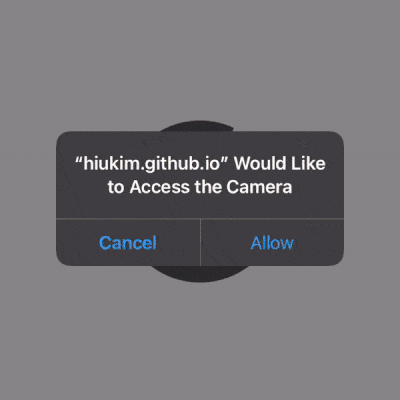Overview
MindAR project can be run in plain static HTML file. It's super easy!
In this quick start guide, you will build a AR webpage, which will start the device camera, detect an image target, and show an augmented object on top.

To give you a quick idea of how easy it is, below is the complete source for the example!
<html>
<head>
<meta name="viewport" content="width=device-width, initial-scale=1" />
<script src="https://aframe.io/releases/1.6.0/aframe.min.js"></script>
<script src="https://cdn.jsdelivr.net/npm/mind-ar@1.2.5/dist/mindar-image-aframe.prod.js"></script>
</head>
<body>
<a-scene mindar-image="imageTargetSrc: https://cdn.jsdelivr.net/gh/hiukim/mind-ar-js@1.2.5/examples/image-tracking/assets/card-example/card.mind;" color-space="sRGB" renderer="colorManagement: true, physicallyCorrectLights" vr-mode-ui="enabled: false" device-orientation-permission-ui="enabled: false">
<a-assets>
<img id="card" src="https://cdn.jsdelivr.net/gh/hiukim/mind-ar-js@1.2.5/examples/image-tracking/assets/card-example/card.png" />
<a-asset-item id="avatarModel" src="https://cdn.jsdelivr.net/gh/hiukim/mind-ar-js@1.2.5/examples/image-tracking/assets/card-example/softmind/scene.gltf"></a-asset-item>
</a-assets>
<a-camera position="0 0 0" look-controls="enabled: false"></a-camera>
<a-entity mindar-image-target="targetIndex: 0">
<a-plane src="#card" position="0 0 0" height="0.552" width="1" rotation="0 0 0"></a-plane>
<a-gltf-model rotation="0 0 0 " position="0 0 0.1" scale="0.005 0.005 0.005" src="#avatarModel" animation="property: position; to: 0 0.1 0.1; dur: 1000; easing: easeInOutQuad; loop: true; dir: alternate">
</a-entity>
</a-scene>
</body>
</html>
Let's go!